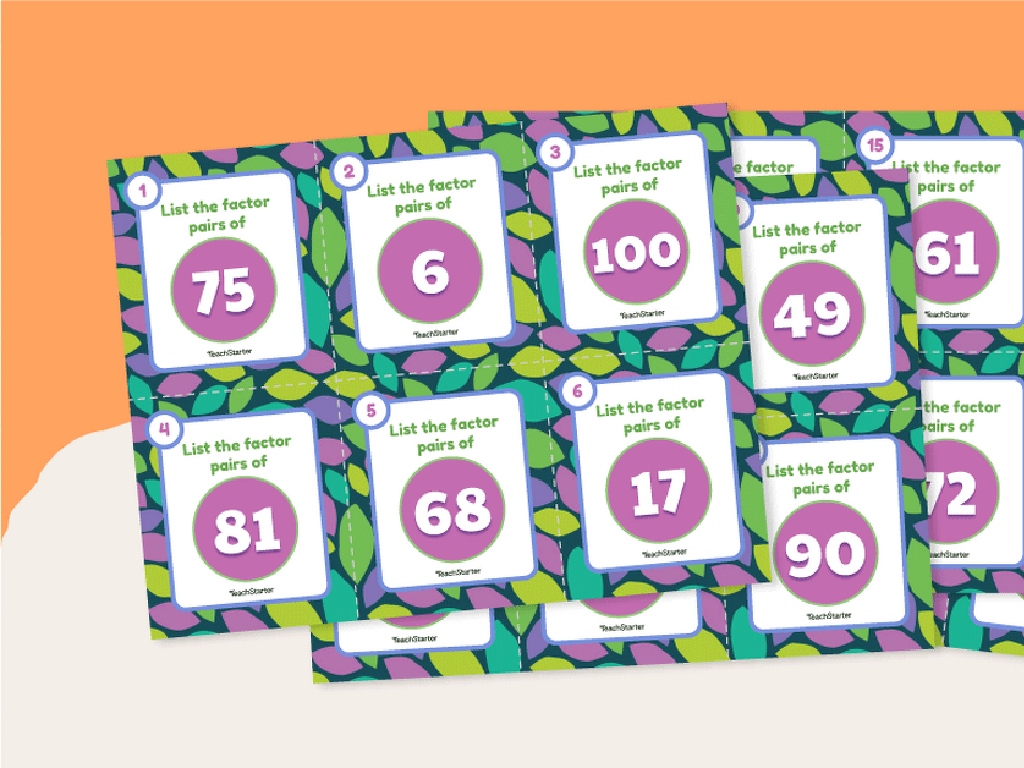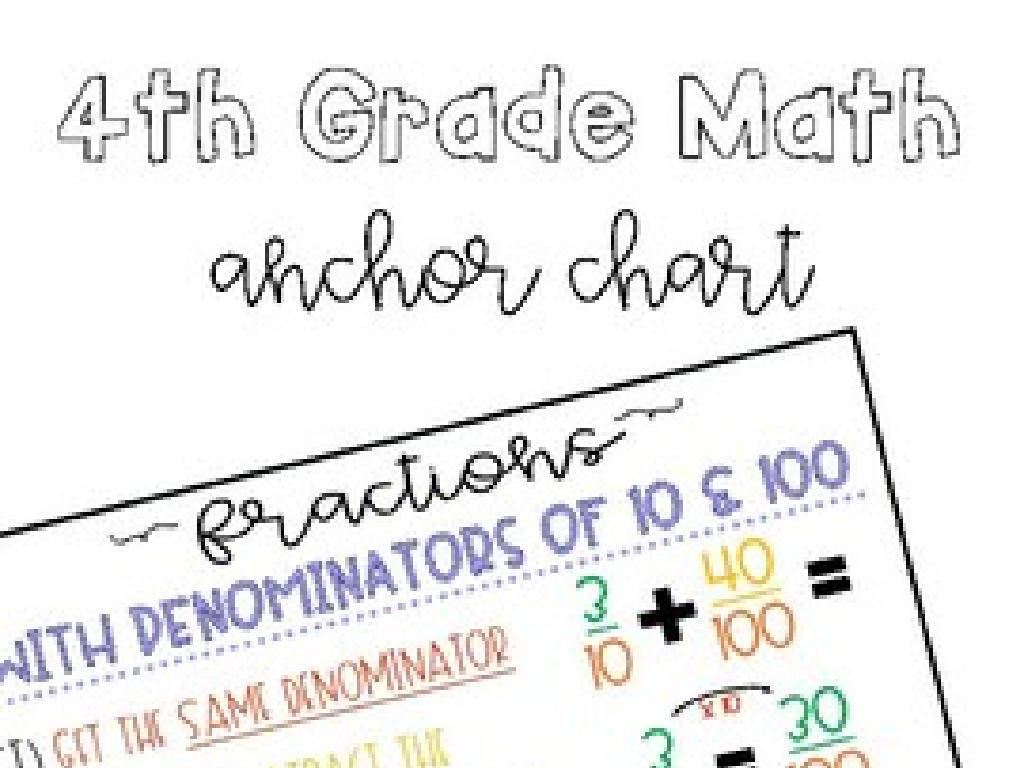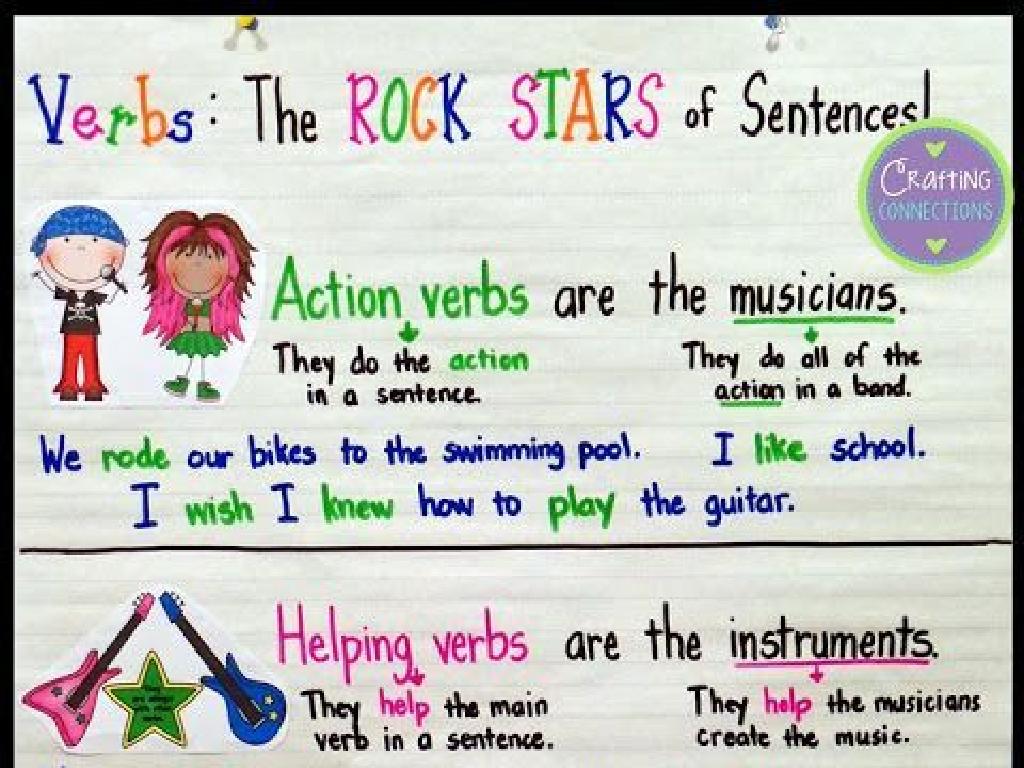Divide Money Amounts: Word Problems
Subject: Math
Grade: Fifth grade
Topic: Money
Please LOG IN to download the presentation. Access is available to registered users only.
View More Content
Dividing Money: Word Problems
– Understanding the value of money
– Money is used to buy things we need and want.
– Review: Adding & subtracting money
– Quick recap of how to combine and separate amounts.
– Learn to divide money in problems
– We’ll learn how to share money equally in different scenarios.
– Practice with real-world examples
– Use examples like splitting bills or dividing money into savings.
|
This slide introduces the concept of dividing money, which is a practical skill for students to learn. Start by discussing the importance of money in everyday life and how it’s used. Then, quickly review addition and subtraction with money to ensure students are comfortable with basic operations. The main focus of today’s lesson is to teach students how to divide money in the context of word problems, which will help them understand how to apply division in real-life situations. Provide examples such as dividing money among friends or allocating a weekly allowance into daily spending. Encourage students to think critically about how division of money can be used in various scenarios they might encounter.
Understanding Division with Money
– Division: Equal parts sharing
– Key terms: Dividend, Divisor, Quotient
– Dividend: amount you divide. Divisor: number of parts. Quotient: result.
– Real-world money division
– Splitting a bill, budgeting allowance, or sharing a prize.
– Practice with word problems
– Solve problems involving dividing money equally.
|
This slide introduces the concept of division as it relates to money, a vital skill for real-life financial literacy. Begin by explaining division as the process of distributing a total amount equally into a number of parts. Introduce the terms ‘dividend’ (the amount to be divided), ‘divisor’ (the number of equal parts), and ‘quotient’ (the result of division). Provide relatable examples such as dividing a dinner bill among friends or budgeting a weekly allowance. Conclude with word problems that apply these concepts, ensuring students understand how to divide money amounts in practical situations. Encourage students to think of other scenarios where they might need to use division with money.
Dividing Money – Basics
– Divide money by whole numbers
– Split a dollar amount evenly by a number, like $4 by 2 equals $2 each.
– Understand place value and decimals
– Remember each place after the decimal represents tenths, hundredths, etc.
– Practice: $10 between 2 people
– How much does each person get if $10 is divided by 2?
|
This slide introduces the concept of dividing money, a practical application of division in everyday life. Start by explaining how to divide a sum of money by whole numbers, ensuring students understand that the result gives the amount each person receives. Emphasize the importance of place value when working with decimals, as money is often expressed to two decimal places. Use the example of dividing $10 by 2 to illustrate the concept with a simple, relatable scenario. Encourage students to think about how division of money might occur in real life, such as sharing costs or splitting a bill. Provide additional practice problems for students to solve independently or in groups.
Dividing Money: Word Problem Strategies
– Carefully read the problem
– Find the total money amount
– The total sum of money to be divided
– Figure out the number of shares
– Divisor: How many parts to divide into
– Compute the amount per share
– Quotient: How much each part gets
|
This slide is aimed at teaching students a systematic approach to solving word problems involving the division of money. Start by reading the problem thoroughly to understand what is being asked. Next, identify the total amount of money that needs to be divided; this is your dividend. Then, determine the number of shares or groups the money is to be divided into; this is your divisor. Finally, calculate the amount each share or group receives; this is your quotient. Encourage students to annotate the problem, underlining key information and writing notes in the margins. Provide examples such as dividing a sum of money equally among a certain number of people and have students practice with similar problems.
Dividing Money: Group Purchase
– Problem: 4 friends buy a $20 toy
– Identify total cost and friends
– Total amount is $20, friends are 4
– Calculate individual payment
– Divide total cost by number of friends
– Each friend pays $5
– $20 divided by 4 equals $5
|
This slide presents a word problem about dividing money among a group. The problem is designed to help students apply division to real-life situations involving money. Start by reading the problem aloud and ensure students understand the scenario. Then, guide them through the process of identifying the total amount and the number of friends involved. Next, demonstrate how to calculate the amount each friend needs to pay by dividing the total cost by the number of friends. Emphasize the importance of fair sharing and how division is used to achieve this. Encourage students to think of similar situations where they might need to use division to share costs equally.
Dividing Money: Book Buying Problem
– Problem: $50 for 5 books
– Identify total and quantity
– Total amount is $50, for 5 books
– Calculate spending per book
– Divide $50 by 5 to find the amount per book
|
This slide presents a word problem that involves dividing a sum of money equally to purchase multiple items. The problem is relatable for students as it involves buying books, a common activity. Start by reading the problem aloud and identifying the total amount of money and the number of books to be purchased. Then, guide the students through the calculation step by step, dividing the total amount by the number of books to find out how much can be spent on each book. Encourage students to visualize the division of money as if they were actually spending it, which can help in understanding the concept of division in a practical context. After explaining, ask students to solve similar problems to reinforce the concept.
Dividing Money: Practice Problems
– Work in pairs on word problems
– Share strategies and answers
– Discuss challenges faced
– Were there any confusing parts?
– Reflect on problem-solving
– Think about steps that helped you solve the problems
|
This slide is designed for a collaborative class activity where students will pair up to tackle new word problems involving dividing money. Encourage students to communicate and work together to find solutions. After solving the problems, each pair will share their strategy and the answer they arrived at with the rest of the class, fostering a learning environment where students can learn from each other. Encourage them to discuss any challenges they encountered during the process. This will help them reflect on their problem-solving skills and understand different approaches to the same problem. As a teacher, facilitate the discussion by asking guiding questions and providing feedback. Possible activities include dividing a sum of money equally among a group, calculating change from a purchase, or determining the cost per item in a bundle.
Class Activity: Money Division Game
– Split into small groups
– Receive play money and word problems
– Solve by dividing money among group
– Discuss successful strategies
|
This interactive class activity is designed to help students understand the concept of dividing money through hands-on experience. Divide the class into small groups and provide each group with play money and a set of word problems involving money division. Students will physically divide the play money to solve the problems, which will help them grasp the concept of division in a tangible way. After the activity, lead a class discussion to reflect on the strategies that different groups found effective. This will allow students to learn from each other and understand various approaches to solving division problems. Possible activities for different groups could include dividing money for a pretend shopping trip, splitting money equally for an event, or sharing money based on different scenarios provided in the word problems.
Wrapping Up: Division of Money
– Review key points of dividing money
– Homework: Money Division worksheet
– Solve various word problems involving money division.
– Next lesson: Multiplying money
– Practice makes perfect!
– Keep practicing with different problems to master division.
|
As we conclude today’s lesson on dividing money, it’s important to recap the key concepts and ensure that students are comfortable with the process. For homework, students are expected to complete a worksheet that includes a variety of word problems, which will help reinforce their understanding. Looking ahead, we will be exploring how to multiply money amounts, building on the division skills learned today. Encourage students to practice regularly, as this will help them become more confident in their ability to handle money-related math problems.





